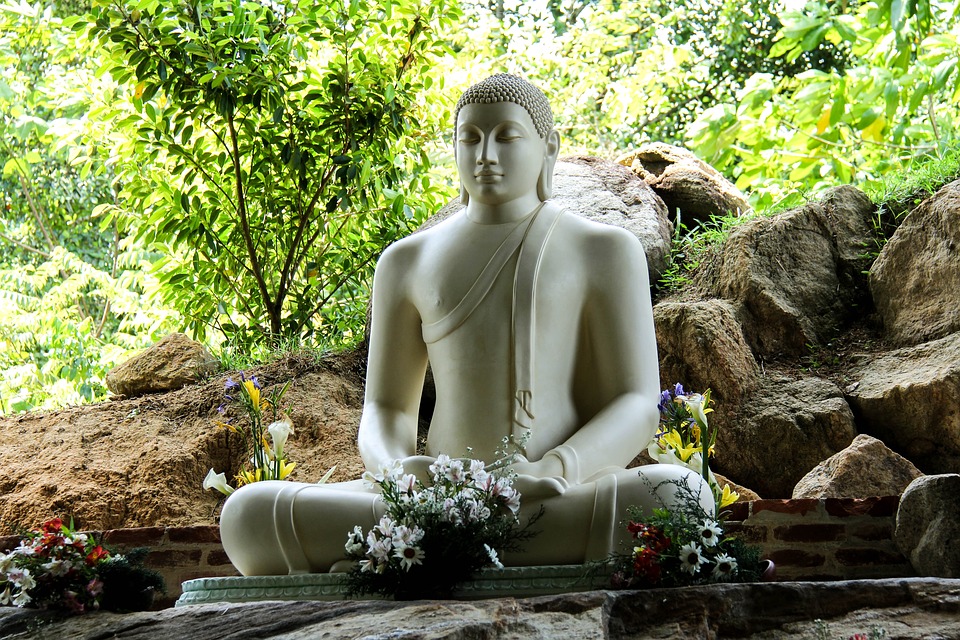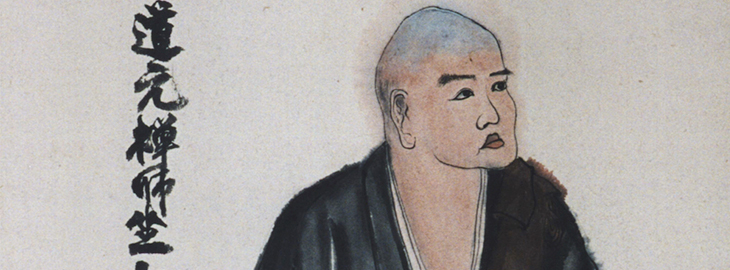I take refuge in the Buddha.
I take refuge in the Dharma.
I take refuge in the Sangha.
Together, Buddha, Dharma and Sangha are called the Three Jewels or Three Treasures.This article will explore the first treasure — I take refuge in the Buddha. What does that mean, and how does one do that? What is it to take refuge in the Buddha?
In her book The Wisdom of No Escape, Tibetan Buddhist teacher Pema Chodron wrote, “I’ve always thought that the phrase ‘to take refuge’ is very curious because it sounds theistic, dualistic, and dependent ‘to take refuge’ in something.” In other words, it sounds as if we’re asking some big Buddha in the sky to protect us. But that doesn’t sound very, well, Buddhist.
But Pema Chodron goes on to say, “The buddha, we say traditionally, is the example of what we also can be. The buddha is the awakened one, and we too are the buddha.”

Who Is the Buddha?
Keep in mind that the name “buddha” might signify many things. It may signify the historical Buddha, the man who realized enlightenment 25 centuries ago and left us his teaching. But it also might signify enlightenment itself. The name “buddha” is derived from the Sanskrit “bodhi,” which means “awake.” So, in a sense, to take refuge in the Buddha is to trust in our own awakening.
The Theravada Buddhist monk and scholar Bikkhu Bodhi wrote, “The Buddha serves as the indicator of refuge. He is not a savior who can bestow salvation through the agency of his person. Salvation or deliverance depends upon us, upon our own vigor and dedication in the practice of the teaching.”
The Buddha was a historical person. However, when we take refuge in Buddha we are not taking refuge in him “merely in his concrete particularity,” Bikkhu Bodhi said. “When we take refuge in the Buddha we rely upon him as a refuge because he embodies this attainment in himself. It is his Buddhahood that makes the Buddha a refuge.”
What Is Buddhahood?
Buddhahood can be understood many different ways. Theravada Buddhists usually describe Buddhahood as being purified of all defilements and perfect in all virtues. Mahayana Buddhists, on the other hand, speak of Buddha Nature as the fundamental nature of all beings. Buddha Nature is sometimes understood as a seed or potential for enlightenment, but sometimes it is understood as enlightenment itself, already present whether we realize it or not.
Read More: What Is Buddha Nature?
In his book The Heart of the Buddha’s Teaching, Thich Nhat Hanh wrote,
“In Chinese and Vietnamese, practitioners always say, “I go back and rely on the Buddha in myself.” Adding ‘in myself’ makes it clear that we ourselves are the Buddha. When we take refuge in Buddha, we must also understand, ‘The Buddha takes refuge in me.’ Without the second part, the first is not complete.”
The American Zen teacher John Daido Loori wrote in his book The Heart of Being,
“The Buddha Treasure, from the perspective of the unified Three Treasures, is anuttara-samyaksambodhi, perfect enlightenment. No one is without it. It does not increase one bit in Buddhas, nor is it reduced one bit in ‘ordinary’ beings. It is our fundamental nature, the fundamental nature of each and every one of us. It is the essential reality of this great earth and of the universe.”
So, from this perspective we can understand “taking refuge in the Buddha” also as taking refuge in ourself. And this “self” is not separate from all other beings and from the cosmos, throughout space and time.
At this point you may be feeling a bit let down. We’ve gone from taking refuge in a serene celestial being to being tossed into the cold vastness of reality and told, “Here’s your refuge.” Here is where the other treasures, the Dharma and the Sangha, come in. The Three Treasures are one refuge, and looking at any one in isolation is not getting the whole picture.
What Refuge? The Role of Faith
A refuge is a place of safety where we trust we will not come to harm. We may appreciate that in this case we’re not talking about a physical place. Still, you may want to think of “buddha” as something out there that will somehow take away your anxieties. But remember, the Buddha taught that it’s our very grasping for things “outside” ourself that causes our dissatisfaction.
Read More: The Second Noble Truth
Striving for perfection is another dead end. In his book A Path With Heart, meditation teacher Jack Kornfield writes that we cannot find the Buddha outside ourselves, and we cannot find the Buddha by attempting to transform ourselves into some kind of perfect being. He wrote,
“Whether we seek enlightenment through altered states or in community, or in our everyday life, it will never come to us when we seek perfection. If not, then where do we find the Buddha in the midst of this? The Buddha arises when we are able to see ourselves and the world with honesty and compassion.”
Seeing the world with honesty and compassion comes from the study and practice of the Dharma and the support of the Sangha.
If you are new to Buddhism, Buddha, Dharma and Sangha may be words that don’t seem to offer much of a refuge. So, in the beginning we need faith. Faith in the Buddhist sense is not about blindly accepting teachings; rather, it’s a matter of trust, including trust in ourselves to see the world with honesty and compassion.
Read More: The Faith of Buddhism
Taking refuge in The Buddha doesn’t mean your spiritual path will be without obstacles and problems. Indeed, when we practice Buddhism, it’s the obstacles and problems that become the stuff of our practice. To take refuge in Buddha is to have faith that you already have what you need to realize enlightenment. To take refuge in the Buddha is to allow the Buddha to arise.
[This is an article I wrote for the Buddhism section of About.com. However, since About.com has removed it from their servers, all rights revert to me.]





